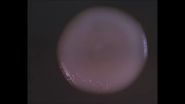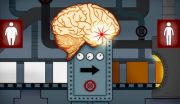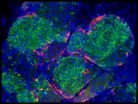(Press-News.org) Researchers from the National Cancer Institute report that decaffeinated coffee drinking may benefit liver health. Results of the study published in Hepatology, a journal of the American Association for the Study of Liver Diseases, show that higher coffee consumption, regardless of caffeine content, was linked to lower levels of abnormal liver enzymes. This suggests that chemical compounds in coffee other than caffeine may help protect the liver.
Coffee consumption is highly prevalent with more than half of all Americans over 18 drinking on average three cups each day according to a 2010 report from the National Coffee Association. Moreover, the International Coffee Association reports that coffee consumption has increased one percent each year since the 1980s, increasing to two percent in recent years. Previous studies found that coffee consumption may help lower the risk of developing diabetes, cardiovascular disease, non-alcoholic fatty liver disease, cirrhosis, and liver cancer.
"Prior research found that drinking coffee may have a possible protective effect on the liver. However, the evidence is not clear if that benefit may extend to decaffeinated coffee," explains lead researcher Dr. Qian Xiao from the National Cancer Institute in Bethesda, Maryland.
For the present study researchers used data from the U.S. National Health and Nutrition Examination Survey (NHANES, 1999-2010). The study population included 27,793 participants, 20 years of age or older, who provided coffee intake in a 24-hour period. The team measured blood levels of several markers of liver function, including aminotransferase (ALT), aminotransferase (AST), alkaline phosphatase (ALP) and gamma glutamyl transaminase (GGT) to determine liver health.
Participants who reported drinking three or more cups of coffee per day had lower levels of ALT, AST, ALP and GGT compared to those not consuming any coffee. Researchers also found low levels of these liver enzymes in participants drinking only decaffeinated coffee.
Dr. Xiao concludes, "Our findings link total and decaffeinated coffee intake to lower liver enzyme levels. These data suggest that ingredients in coffee, other than caffeine, may promote liver health. Further studies are needed to identify these components."
INFORMATION:
This study is published in Hepatology. Media wishing to receive a PDF of this articles may contact sciencenewsroom@wiley.com
Full citation: "Inverse associations of total and decaffeinated coffee with liver enzyme levels in NHANES 1999-2010." Qian Xiao, Rashmi Sinha, Barry I. Graubard and Neal D. Freedman. Hepatology; (DOI: 10.1002/hep.27367).
URL: http://doi.wiley.com/10.1002/hep.27367
Author Contact: Media wishing to speak with Dr. Xiao may contact the NCI press office at ncipressofficers@mail.nih.gov.
Media Advisory
The Liver Meeting® 2014
Founded in 1950, AASLD is the leading organization of scientists and healthcare professionals committed to preventing and curing liver disease. AASLD has grown into an international society responsible for all aspects of hepatology, and the annual meeting attracts 10,000 physicians, surgeons, researchers, and allied health professionals from around the world.
The Liver Meeting® is the premier meeting in the science and practice of hepatology, including the latest findings on new drugs, novel treatments, and the results from pilot and multicenter studies.
When: November 7 - 11, 2014
Where: Hynes Convention Center in Boston, Massachusetts
Contact: Please go to https://www.xpressreg.net/register/asld114/media/reginfo.asp to obtain a press pass for this event.
About the Journal
Hepatology is the premier publication in the field of liver disease, publishing original, peer-reviewed articles concerning all aspects of liver structure, function and disease. Each month, the distinguished Editorial Board monitors and selects only the best articles on subjects such as immunology, chronic hepatitis, viral hepatitis, cirrhosis, genetic and metabolic liver diseases and their complications, liver cancer, and drug metabolism. Hepatology is published on is published by Wiley on behalf of the American Association for the Study of Liver Diseases (AASLD). For more information, please visit http://wileyonlinelibrary.com/journal/hep.
About Wiley
Wiley is a global provider of content-enabled solutions that improve outcomes in research, education, and professional practice. Our core businesses produce scientific, technical, medical, and scholarly journals, reference works, books, database services, and advertising; professional books, subscription products, certification and training services and online applications; and education content and services including integrated online teaching and learning resources for undergraduate and graduate students and lifelong learners.
Founded in 1807, John Wiley & Sons, Inc. (NYSE: JWa, JWb), has been a valued source of information and understanding for more than 200 years, helping people around the world meet their needs and fulfill their aspirations. Wiley and its acquired companies have published the works of more than 450 Nobel laureates in all categories: Literature, Economics, Physiology or Medicine, Physics, Chemistry, and Peace. Wiley's global headquarters are located in Hoboken, New Jersey, with operations in the U.S., Europe, Asia, Canada, and Australia. The Company's website can be accessed at http://www.wiley.com.
Drinking decaf coffee may be good for the liver
2014-10-09
ELSE PRESS RELEASES FROM THIS DATE:
Nanoparticles get a magnetic handle
2014-10-09
CAMBRIDGE, Mass--A long-sought goal of creating particles that can emit a colorful fluorescent glow in a biological environment, and that could be precisely manipulated into position within living cells, has been achieved by a team of researchers at MIT and several other institutions. The finding is reported this week in the journal Nature Communications.
The new technology could make it possible to track the position of the nanoparticles as they move within the body or inside a cell. At the same time, the nanoparticles could be manipulated precisely by applying a magnetic ...
Advanced x-ray, neutron beam imaging reveal workings of powerful biochemical switch PKA
2014-10-09
(SALT LAKE CITY)—A University of Utah-led study using X-rays and neutron beams has revealed the inner workings of a master switch that regulates basic cellular functions, but that also, when mutated, contributes to cancer, cardiovascular disease and other deadly disorders.
Learning more about how the Protein Kinase A (PKA) switch works will help researchers to understand cellular function and disease, according to Donald K. Blumenthal, Ph.D., associate professor of pharmacology and toxicology at the University of Utah (U of U) College of Pharmacy who led the study. ...
Dead star shines on
2014-10-09
A supernova is the cataclysmic death of a star, but it seems its remnants shine on. Astronomers have found a pulsating, dead star beaming with the energy of about 10 million suns.
This is the brightest pulsar -- a dense stellar remnant leftover from a supernova -- ever recorded, and was seen using NASA's Nuclear Spectroscopic Telescope Array, or NuSTAR.
Lawrence Livermore LLNL researchers were involved in the design and testing of the NuSTAR X-ray optics.
"You might think of this pulsar as the 'Mighty Mouse' of stellar remnants," said Fiona Harrison, the NuSTAR principal ...
NASA's Aqua Satellite tracking Super Typhoon Vongfong in the Philippine Sea
2014-10-09
NASA's Aqua satellite passed over Super Typhoon Vongfong as it tracked through the Philippine Sea on Oct. 9. Instrument aboard Aqua captured visible and infrared images of the now Category 4 Super Typhoon.
Two instruments aboard NASA's Aqua satellite provided visible and infrared data on the Super Typhoon: The Moderate Resolution Imaging Spectroradiometer or MODIS and the Atmospheric Infrared Sounder or AIRS instrument, respectively. MODIS captured a visible image of Super Typhoon Vongfong on Oct. 9 at 04:25 UTC (12:25 a.m. EDT) that showed two concentric eyewalls with ...
Multiple neurodevelopmental disorders have a common molecular cause
2014-10-09
Neurodevelopmental disorders such as Down syndrome and autism-spectrum disorder can have profound, lifelong effects on learning and memory, but relatively little is known about the molecular pathways affected by these diseases. A study published by Cell Press October 9th in the American Journal of Human Genetics shows that neurodevelopmental disorders caused by distinct genetic mutations produce similar molecular effects in cells, suggesting that a one-size-fits-all therapeutic approach could be effective for conditions ranging from seizures to attention-deficit hyperactivity ...
Thanks, fruit flies, for that pleasing beer scent
2014-10-09
VIDEO:
Behavior experiments in which flies were given the choice between wild-type and mutant fermentation headspace in the middle of the experiment, and they migrate accordingly.
Click here for more information.
The familiar smell of beer is due in part to aroma compounds produced by common brewer's yeast. Now, researchers reporting in the Cell Press journal Cell Reports on October 9th have discovered why the yeast (formally known as S. cerevisiae) make that smell: the scent attracts ...
Researchers uncover how 'love hormone' regulates sexual behavior
2014-10-09
Oxytocin has been called the "love hormone" because it plays an important role in social behaviors, such as maternal care and pair bonding. In a study published by Cell Press on October 9th in the journal Cell, researchers uncover oxytocin-responsive brain cells that are necessary for female social interest in male mice during estrus—the sexually receptive phase of their cycle. These neurons, found in the prefrontal cortex, may play a role in other oxytocin-related social behaviors such as intimacy, love, or mother-child bonding.
"Our findings suggest that social ...
Newly discovered brain cells explain a prosocial effect of oxytocin
2014-10-09
Oxytocin, the body's natural love potion, helps couples fall in love, makes mothers bond with their babies, and encourages teams to work together. Now new research at Rockefeller University reveals a mechanism by which this prosocial hormone has its effect on interactions between the sexes, at least in certain situations. The key, it turns out, is a newly discovered class of brain cells.
"By identifying a new population of neurons activated by oxytocin, we have uncovered one way this chemical signal influences interactions between male and female mice," says Nathaniel ...
Hunger games: How the brain 'browns' fat to aid weight loss
2014-10-09
Researchers at Yale School of Medicine have uncovered a molecular process in the brain known to control eating that transforms white fat into brown fat. This process impacts how much energy we burn and how much weight we can lose. The results are published in the Oct. 9 issue of the journal Cell.
Obesity is a rising global epidemic. Excess fatty tissue is a major risk factor for type 2 diabetes, cardiovascular disease, hypertension, neurological disorders, and cancer. People become overweight and obese when energy intake exceeds energy expenditure, and excess calories ...
From human embryonic stem cells to billions of human insulin producing cells
2014-10-09
Harvard stem cell researchers today announced that they have made a giant leap forward in the quest to find a truly effective treatment for type 1 diabetes, a condition that affects an estimated three million Americans at a cost of about $15 billion annually:
With human embryonic stem cells as a starting point, the scientists are for the first time able to produce, in the kind of massive quantities needed for cell transplantation and pharmaceutical purposes, human insulin-producing beta cells equivalent in most every way to normally functioning beta cells.
Doug Melton, ...




